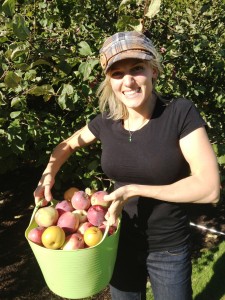 Your metabolism is like a campfire. A skilled campfire builder understands how best to ignite and sustain an efficient blaze by utilizing kindling, larger sticks, and logs. In the same way, stabilizing blood sugar and insulin levels through nutrient-rich, whole foods sources of carbs, proteins, and fats is one of the best ways to give yourself the gift of health. Efficiently fueling your metabolism through a low glycemic eating style is shown to help:
Your metabolism is like a campfire. A skilled campfire builder understands how best to ignite and sustain an efficient blaze by utilizing kindling, larger sticks, and logs. In the same way, stabilizing blood sugar and insulin levels through nutrient-rich, whole foods sources of carbs, proteins, and fats is one of the best ways to give yourself the gift of health. Efficiently fueling your metabolism through a low glycemic eating style is shown to help:
• encourage healthy body weight
• prevent diabetes and general disease
• maintain steady energy levels
• decrease inflammation
• reduce the likelihood of developing polycystic ovary syndrome
• provide satiety—a feeling of satisfaction after eating
• boost immunity through better regulation of the stress hormone cortisol
Following a glycemic index chart by simply eating only low glycemic foods poses a very limited approach to stabilizing blood sugar, however, because there are numerous variables which influence blood sugar regulation. Charts displaying low or high glycemic foods only represent a food’s impact on blood sugar when it is eaten in isolation without having eaten any other foods with it. It is an oversimplification to avoid watermelon as a taboo food simply because it scores higher in sugars compared to other fruits or vegetables because it is still a wonderfully healthy food worth enjoying. To most accurately fuel the blaze of your metabolism, consider my insights into eating low glycemic.
STRATEGY PLAN:
1. Make Fiber Your Best Friend—the insoluble and water-soluble fibers of complex carbohydrates slow down glucose absorption and control the rate of digestion. Fiber also binds with cholesterol in the digestive tract, providing a powerful, cleansing toothbrush for the colon and reducing unhealthy LDL cholesterol. Shoot for eating 50-100 grams daily rather than the RDA’s miniscule 25 grams.
Example: Dust air-popped popcorn with delicious, high fiber, high protein nutritional yeast.
2. Eat Ground Flax Seeds—ground flax seeds (not the oil) are an exceptional source of whole foods fiber, cancer preventing plant sterols and lignins, and omega-3 fatty acids and show profound effects in reducing LDL cholesterol while increasing levels of HDL. Enjoy 2 tablespoons of ground flaxseed per day in smoothies, baked goods, sprinkled on yogurt, etc. Just be sure to store ground or whole flaxseed in the freezer between uses to protect its precious oils.
Example: Rather than drinking an all-fruit smoothie, add the beneficial fats (slow-burning logs) from flaxseed to slow down the fruit sugars.
3. Combine Foods Wisely —blood sugar levels stabilize best when foods considered to be high glycemic if eaten in isolation are instead eaten with foods considered to be low glycemic foods because there is much interpersonal variability with blood sugar depending on certain food combinations. Think of kindling as carbohydrates, protein as large sticks, and fats as logs. A fire cannot run sustainably on kindling all day without the benefit of slower burning sticks and logs. Vinegars, such as raw apple cider vinegar, and lemon juice also slow the digestion rate of a meal, and are a nice addition to salads or drank in water.
Example: Rather than eating a high glycemic bagel and jam for breakfast, spread hummus or avocado on whole grain toast instead. Eat a handful of almonds along with a banana.
4. Avoid Processed Foods—enough said. Processed foods include more than just Twinkies©. Foods labeled “multi-grain” are generally made with a variety of grains and do not contain whole grains. Multi-grain products simply contain multiple types of grains whereas whole grain products are those which contain the whole parts of the grains: the germ, endosperm, and the bran, all of which contain exceptional vitamins and fiber.
Example: Choose old-fashioned oats over instant quick oats, which are highly processed and elevate blood sugar.
5. Eat a Nutrient Rich Whole Foods Diet—learn to love and prefer the world’s healthiest, most nutrient-rich, whole foods. Lean and clean protein sources, whole grains, healthy fats from nuts, seeds, and avocados, fruits, legumes, vegetables, etc. This transformation in eating is perhaps the greatest disease preventing, life-saving and life-giving, alkaline, cell-, satisfying, and energizing gift of health that one can make.
Example: Spread avocado on sandwich bread instead of mayonnaise, which is lower in calories while also being higher in healthy fats, fiber, and nutrients.
6. Prepare Foods Informed—how you prepare or cook a food either raises or lowers blood sugar levels. Leave the skins on fruits and vegetables to benefit from their blood sugar slowing fiber nutrients. Overcooking vegetables and grains increases the digestibility of starch, causing the body to convert its carbohydrates into glucose more quickly. Cook vegetables and whole grains until just before done, or “al dente.” Restaurants are often the worst at cooking fresh vegetables skillfully, as far too often they are distastefully overcooked. Be a proactive customer when ordering and request that any vegetables ordered be under-cooked, or “al dente.”
Example: Leave the skins on mashed potatoes and keep the peeling on apples or cucumbers in salads. Eat fresh fruits with the skin instead of drinking juice.
Keep some crunch in cooked veggies such as carrots.
https://www.facebook.com/CelebrateNutrition
Click below to print article:










